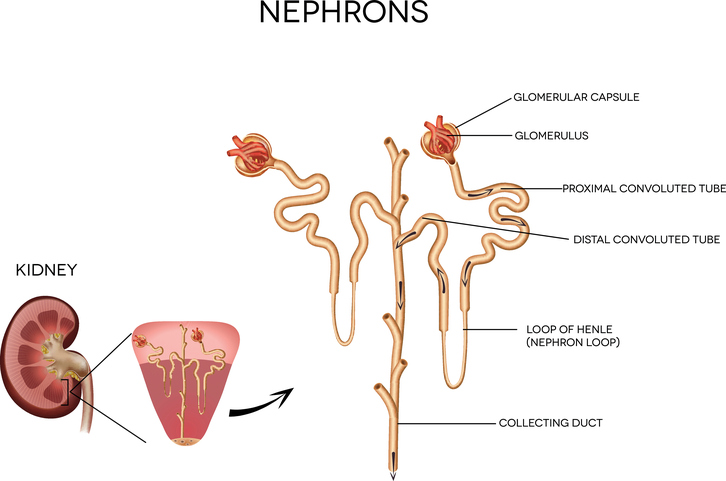Learn

Nephron Overview
There are 1 million nephrons that make up each kidney. They are the functional units of filtration and urine formation. The rate of blood filtration through the kidneys is approximately 125 mL/min or 45 gallons (180 liters) each day. Your entire blood volume gets filtered approximately 20 to 25 times.
We are going to look at the structures of the nephron and how each contributes to the filtering of blood and production of urine. Take a moment to look at the diagram and identify the glomerulus of the nephron where it all begins.

Nephron Structures
The structures of a nephron each play a role in the process of filtering the blood. As you read about each structure, take time to find it on the nephrons diagram.
- Glomerulus - specialized capillaries where filtration occurs to produce filtrate
- Glomerular Capsule (or Bowman's Capsule)– structure that surrounds glomerulus
- Tubules – Where filtrate travels to remove or add particles/water
- Proximal Tubule – ("reabsorption") sends water and ions back to blood
- Distal Tubule – ("secretion") removes waste/drugs/acids/toxins from blood
- Loop of Henle - ("reabsorption") removes water and salt from filtrate and sends back into blood
- Collecting Duct – last part of renal tubule where nephrons all join to collect filtrate and pass it to the ureters as urine. Reabsorption can happen here under the influence of the ADH hormone.


